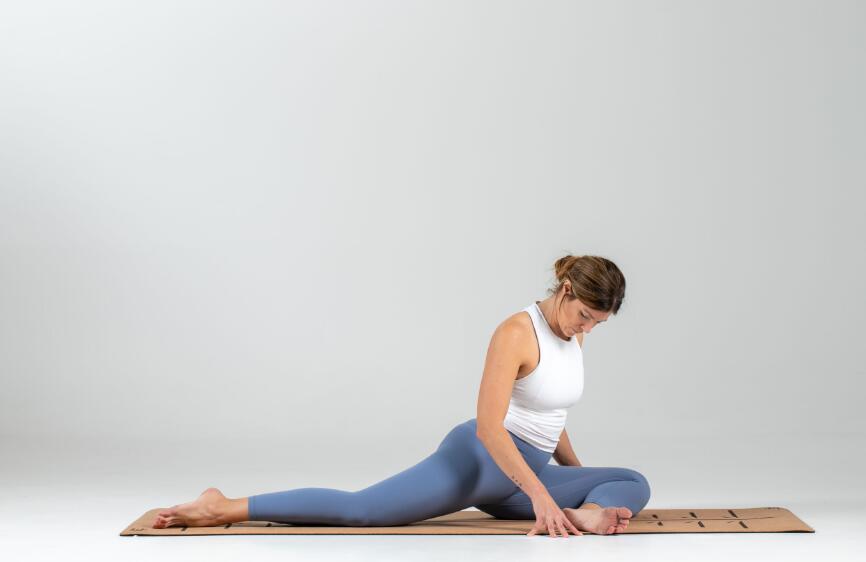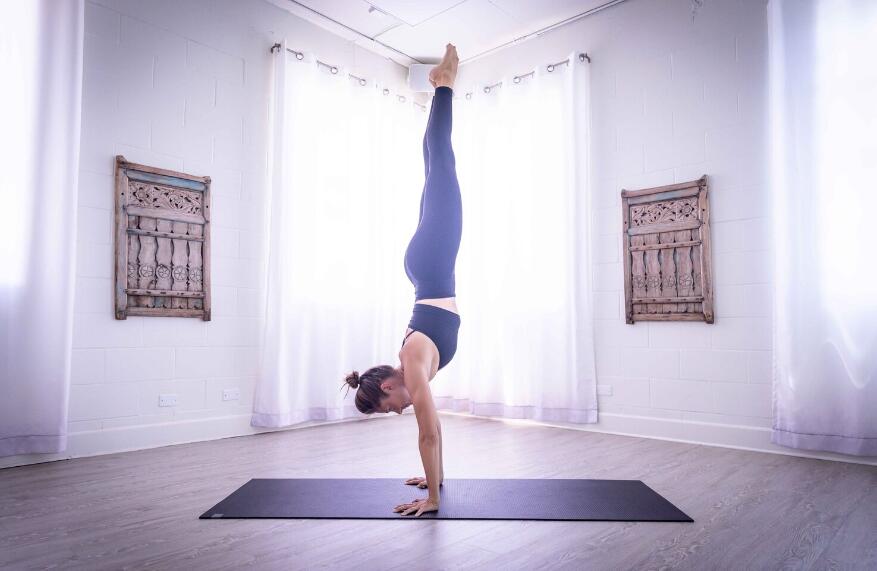Yoga is a practice that not only cultivates physical strength and flexibility but also encourages mindfulness and inner connection. When it comes to enhancing your yoga practice, the role of alignment and grip on your yoga mat is often underestimated. Proper alignment and grip on the mat play a crucial role in unlocking stability and safety, allowing you to explore your practice with confidence and grace.
Understanding the significance of alignment and grip in yoga is essential for practitioners of all levels and styles. Whether you are a beginner or an experienced yogi, aligning your body correctly and maintaining a secure grip on the mat can transform your practice. In this article, we will delve into the various aspects of alignment and grip, explore their benefits, and provide practical tips and techniques to help you enhance your yoga experience.
So, let’s dive deeper into the world of alignment and grip to unlock your full potential on the yoga mat.
Understanding Alignment in Yoga
In the context of yoga, alignment refers to the optimal positioning of your body in each posture. It involves maintaining the correct placement of your joints, muscles, and bones to achieve stability and balance. Proper alignment not only ensures the safety of your practice but also allows energy to flow freely throughout your body.
Aligning your body in yoga postures requires body awareness. This means being fully present and attentive to the sensations in your body as you move through each pose. By developing body awareness, you can make subtle adjustments to your alignment, preventing strain or injury, and maximizing the benefits of each posture.
Benefits of Proper Alignment in Yoga Practice

1. Enhanced stability: When your body is properly aligned, you create a stable foundation, allowing you to move with greater ease and balance. This stability not only prevents unnecessary wobbling or falling but also enables you to explore more advanced postures confidently.
2. Improved body mechanics: Correct alignment optimizes the efficiency of your movements. It ensures that you are engaging the appropriate muscles and distributing the workload evenly, reducing the strain on specific joints or muscles. This improves overall body mechanics and reduces the risk of injuries.
3. Deeper breath and energy flow: When you align your body in a way that relieves tension and blockages, you create space for deeper breaths and enhanced energy flow. This enables you to access a state of deep relaxation and helps to cultivate a sense of inner calm and balance.
To cultivate proper alignment, focus on alignment cues provided by your yoga instructor or through self-guided practice. These cues often emphasize the placement of specific body parts such as the feet, knees, hips, shoulders, and spine. By aligning these key points, you can find a sense of stability, integrity, and balance in your yoga practice.
Body Awareness and Posture Alignment
Body awareness is a fundamental aspect of aligning your body in yoga postures. It involves paying attention to the sensations, limitations, and strengths of your body as you move through each pose. The practice of body awareness allows you to make subtle adjustments to your alignment, ensuring that you are not pushing beyond your limits or compromising your body’s integrity.
When aligning your body in yoga postures, start by bringing your attention to your breath. Take deep, conscious breaths and feel the expansion and contraction of your body. This helps you establish a mind-body connection and prepares you to move with intention and mindfulness.
As you transition into each posture, focus on how your body feels in space. Notice any areas of tightness, discomfort, or instability. These sensations are valuable feedback that guide you in making alignment adjustments.
Alignment cues are invaluable in promoting body awareness and posture alignment. Your yoga instructor may use verbal cues to guide you, such as “knees over ankles” or “draw your shoulder blades down and back.” These cues draw your attention to specific areas of your body, helping you align them correctly.
Exploring Grip on the Yoga Mat

In addition to alignment, grip plays a significant role in your yoga practice. Grip refers to the traction or adherence between your body and the yoga mat. A good grip prevents slipping, provides stability, and allows you to maintain your poses with confidence.
> Factors Influencing Grip on the Mat:
1. Mat Material: Different yoga mats are made from various materials, such as PVC, rubber, cork, or TPE. Each material offers different levels of grip. Rubber mats, for example, tend to have excellent traction, while PVC mats may be more slippery when wet. Consider the type of material that best suits your needs and provides the desired level of grip.
2. Mat Texture: The texture of the yoga mat can significantly impact grip. Mats with textured surfaces, such as those with raised patterns or a rougher feel, generally offer better traction. Smooth or shiny mats may be more slippery, especially when moisture is present. Experiment with different textures to find the one that suits your practice best.
3. Personal Factors: Factors unique to each individual, such as perspiration levels or body chemistry, can influence grip on the mat. Some people naturally have sweaty palms or feet, making it challenging to maintain a secure grip. If grip is an issue for you, there are ways to mitigate it, which we will discuss later in this article.
It is essential to find a balance between grip and freedom of movement. While a good grip is crucial for stability, too much stickiness can hinder smooth transitions between poses. Ultimately, choosing a mat with the right amount of grip can significantly enhance your practice.
> Different Types of Yoga Mat Surfaces and Their Grip Levels
Yoga mats come in a variety of surface textures that affect grip. Here are some common types:
1. Textured Mats: These mats have patterns or textures that create friction and enhance grip. They are often made of thick rubber or have cork surfaces. The rougher texture helps to prevent slipping and provides a secure foothold during standing poses or inversions.
2. Smooth Mats: Smooth mats have a sleek, non-textured surface. While they may look aesthetically pleasing, they may lack grip, especially if they become moist from sweat. Avoid using smooth mats if you tend to sweat profusely or practice vigorous styles of yoga.
3. Microfiber Towels: Some yogis opt to use microfiber towels on top of their mats to enhance grip. These towels absorb moisture and become tacky, providing an extra layer of traction. They are especially useful in hot yoga or if you struggle with sweaty palms or feet.
In conclusion, the grip on your yoga mat is influenced by factors such as mat material, texture, and individual characteristics. Understanding these factors and selecting the right mat surface that complements your practice can greatly improve your grip and overall stability during your yoga sessions.
Alignment and Grip: Enhancing Stability in Yoga Asanas
Alignment and grip work hand in hand to create a solid foundation and enhance stability in your yoga practice. By focusing on proper alignment and maintaining a strong grip on the mat, you can experience increased stability, balance, and a deeper connection to your body. Let’s explore how alignment and grip contribute to stability in yoga asanas.
> Establishing a Strong Foundation through Proper Alignment
Alignment plays a crucial role in establishing a strong foundation for your yoga practice. When your body is aligned correctly, you distribute weight evenly and engage the appropriate muscles, creating a stable base of support.
A properly aligned foundation starts from the ground up. Pay attention to the alignment of your feet, ensuring they are evenly grounded and providing a solid base. In standing poses such as Warrior II or Tree pose, align your front foot so that it points forward, while the back foot is slightly turned in. This alignment helps to create stability and balance.
Additionally, aligning your knees, hips, and shoulders properly is essential for stability in various yoga postures. For example, in a forward fold, hinge from your hips while keeping your spine straight, maintaining alignment between your shoulders and hips. This alignment minimizes the risk of strain or injury and maximizes the benefits of the pose.
When you establish a strong foundation through proper alignment, you create a solid base that allows you to explore more challenging yoga poses and transitions with confidence and stability.
> Utilizing Grip to Maintain Balance and Stability
Grip on the yoga mat acts as your anchor, providing stability and preventing slippage during your practice. It allows you to maintain balance and engage the necessary muscles to hold challenging poses.
One way to enhance grip on the mat is by engaging your hands and feet. Spread your fingers and press them firmly into the mat, creating a wide and stable base of support. In standing poses, distribute your weight evenly across your feet, rooting down through all four corners of each foot. This grounding action helps to establish a strong connection with the mat, enhancing grip and stability.
For poses that involve balancing, such as Tree pose or Warrior III, engage your foot by pressing it firmly into the mat. This action activates the muscles in your foot and lower leg, providing a stable foundation to balance upon.
In addition to engaging your hands and feet, be mindful of your grip throughout your practice. Maintain a firm but relaxed grip, avoiding unnecessary tension in your hands, which can hinder your ability to perform poses fluidly.
How Alignment and Grip Prevent Injuries and Improve Posture?

Alignment and grip are not only essential for stability but also play a vital role in injury prevention and improving posture in yoga.
Proper alignment helps to ensure that your body is in the optimal position for each pose, reducing the risk of strain or injury. By aligning your joints, you maintain their natural alignment and prevent unnecessary stress or pressure on vulnerable areas.
Grip on the mat provides an added layer of safety by preventing slipping or sliding, especially during challenging or dynamic movements. It allows you to maintain control and stability, reducing the likelihood of falls or accidents.
Furthermore, alignment and grip contribute to improved posture in your yoga practice. The alignment cues provided by your yoga teacher or through your own awareness help to correct postural imbalances and promote proper spinal alignment. This, in turn, supports healthy posture both on and off the yoga mat.
Practical Tips for Improving Alignment and Grip
Now that we understand the importance of alignment and grip in yoga, let’s explore some practical tips and techniques to enhance these aspects of your practice. By incorporating these tips into your yoga routine, you can further develop stability, balance, and body awareness.
> Alignment Tips for Improved Body Alignment
1. Listen to your body: Pay close attention to how each pose feels in your body. If you experience pain or discomfort, adjust your alignment to find a more suitable variation or modify the pose to accommodate your needs.
2. Work with props: Props such as blocks, straps, or bolsters can be invaluable in attaining proper alignment. Use them to support your body as needed and to achieve optimal alignment in challenging poses.
3. Practice in front of a mirror: Using a mirror can provide visual feedback and help you observe your alignment more closely. It allows you to see any imbalances or misalignments that may need correction.
4. Seek guidance: Attend yoga classes with experienced teachers who can guide you in aligning your body correctly. Their expert cues and adjustments can refine your alignment and deepen your understanding of each pose.
> Grip Techniques for Enhanced Stability
1. Activate your hands and feet: Prioritize engagement in your hands and feet by pressing them firmly into the mat. This action helps to activate the muscles and create a strong connection with the surface, enhancing grip and stability.
2. Use grip-enhancing products: Consider using grip-enhancing products such as yoga towels, gloves, or grip sprays. These can be particularly useful if you struggle with sweaty palms or feet or if you practice in hot and humid environments.
3. Experiment with different mat surfaces: Explore different yoga mat textures and materials to find the one that offers you the optimal grip and stability. Try mats with textures or surfaces designed for enhanced traction.
4. Maintain a relaxed grip: Avoid gripping the mat too tightly, as it can create unnecessary strain and tension in your hands and forearms. Find a balance between a firm grip and maintaining a sense of ease and relaxation.
Integrating Alignment and Grip in Your Practice
1. Cultivate body awareness: Regularly check in with your body and notice how it feels in each pose. Develop a sense of body awareness to make subtle adjustments and alignments as needed.
2. Practice mindfulness: Cultivate a sense of mindfulness during your practice by focusing on your breath and staying present. Mindfulness helps you maintain a deeper connection to your body and encourages proper alignment and grip.
3. Take it slow: When learning new poses or refining your alignment, take your time. Move through the poses slowly and mindfully, allowing your body to adapt and adjust to the proper alignment and grip.
4. Work on strengthening: Incorporate strength-building exercises into your routine to improve overall stability and grip. This can include exercises that target the muscles of the hands, forearms, and feet.
Conclusion
Alignment and grip are crucial for a safe and fulfilling yoga practice. By developing body awareness, using alignment cues, choosing the right mat, and practicing with intention, you can enhance stability, prevent injuries, and deepen your connection to your body. Embrace alignment and grip in your yoga journey to foster strength, stability, and mindfulness. Enjoy the process and remember that consistency and mindfulness will lead to improvement over time.
